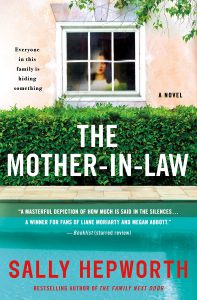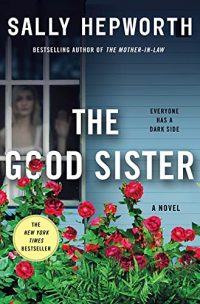Mamas, I’d been in kind of a reading rut, typically choosing the same kinds of books over and over, when I stumbled across a recommendation for a book called “The Mother-in-Law” by Sally Hepworth. The reviews were stellar, so I downloaded a sample. By the end of the sample, I was intrigued enough to buy. Then by the end of the first chapter, I was hooked.
 This mystery starts with a dead body. Your job as the reader is to follow the subtle clues to figure out who did it — and why. It would’ve been easy (and also cliché) for the author to make the character of the mother-in-law a monster, but she manages to make her a little bit of both, a real shrew but also at times a saint. The book is told through the eyes of Lucy, the daughter-in-law, and Diana, the mother-in-law, and there are plenty of other family members and friends of the family who will, at some point, make you say to yourself, “Well… maybe he did it? Or maybe it was actually her?”
This mystery starts with a dead body. Your job as the reader is to follow the subtle clues to figure out who did it — and why. It would’ve been easy (and also cliché) for the author to make the character of the mother-in-law a monster, but she manages to make her a little bit of both, a real shrew but also at times a saint. The book is told through the eyes of Lucy, the daughter-in-law, and Diana, the mother-in-law, and there are plenty of other family members and friends of the family who will, at some point, make you say to yourself, “Well… maybe he did it? Or maybe it was actually her?”
The writing in the book is top-notch, which makes it easy to become immersed in the story and eager to figure out how the murder happened and why. Does it have some dark moments? Absolutely. But not too much for me. And the suspense made for some late-night page turning, which I love.
If you enjoy “The Mother-in-Law” as much as I did, I’d also recommend the book Hepworth wrote after it, which is titled “The Good Sister.” It’s her newest release and the reviews (more than 7,000 of them) are great with a four-and-a-half star rating. (Note that the two novels are not connected, and you can easily read one without knowing anything about the other one.)
“The Good Sister” is told through the eyes of twins and often flashes back to moments in their childhood. What I loved most about this book is that I thought I’d figured it out about halfway through, but then the next several chapters made me question everything I thought I knew. I love it when a book keeps me guessing and doesn’t fall into predictable patterns. One of the main characters, Fern, has Sensory Processing Disorder, and so her descriptions of what most of us would call “normal” situations are so different when you see them through her eyes. She may also have some form of autism or Asperger’s Syndrome, although the book never names it specifically.
The other main character, Rose, does a lot of the storytelling, which includes vivid descriptions of their mother and the events that did (or didn’t) happen as they grew up under her care.
If I was forced to choose my favorite of these two books, I’d probably have to go with “The Mother-in-Law” but only by a hair. They’re both great reads. The only watch-out I’d offer is this: If you’re currently struggling with infertility, you should know that there are discussions of it by characters in both of these books. So decide for yourselves if that’s something you do or don’t want to read in your leisure time.
Hope these two reviews are helpful as you choose your next novel to read!
